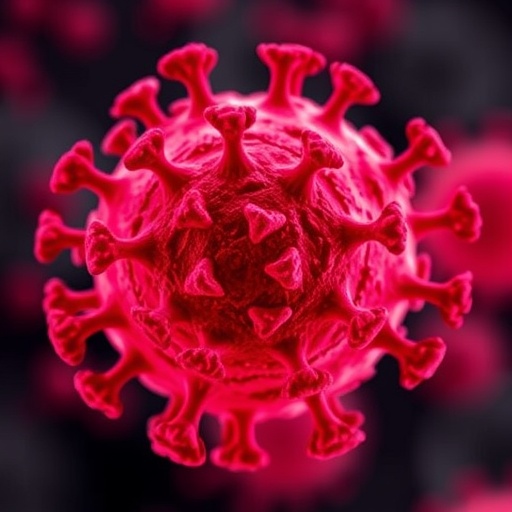
Researchers at the forefront of immunological studies have recently unveiled a groundbreaking strategy aimed at improving tuberculosis (TB) vaccine formulations. The study, published in the Journal of Biomedical Science, introduces an adjunctive role for cyclic di-GMP, a known STING (Stimulator of Interferon Genes) agonist, and its synergistic effects when combined with Toll-like receptor 4 (TLR4) adjuvanted subunit vaccines. This innovative approach represents a significant leap in the quest to enhance the protective efficacy of vaccines targeted at TB prevention, a disease that remains a leading cause of morbidity and mortality worldwide.
Tuberculosis has plagued humanity for centuries, with its infectious nature presenting formidable challenges to public health. The causative agent, Mycobacterium tuberculosis, has developed various strategies to evade the host’s immune system, complicating vaccine development efforts. Current vaccines, particularly the Bacillus Calmette-Guérin (BCG) vaccine, offer limited protective efficacy, prompting the need for more effective vaccine alternatives. Researchers have turned their attention to subunit vaccines, which have shown promise due to their ability to elicit strong immune responses in a safer, yet effective, manner.
The current study emphasizes the potential for cyclic di-GMP to potentiate vaccine efficacy. As a second messenger, cyclic di-GMP plays a pivotal role in intracellular signaling pathways that modulate immune responses. The researchers hypothesized that its application could bolster the effectiveness of TLR4-adjuvanted vaccines, which enhance the maturation of dendritic cells and promote strong Th1 and Th2 immune responses. By using cyclic di-GMP as an adjunct, the teams observed remarkable enhancements in immune activation, which could translate into improved protection against TB.
Experimental models utilized in this investigation demonstrated encouraging results. Animal trials revealed that the administration of cyclic di-GMP in tandem with the subunit vaccine significantly increased the production of specific antibodies and enhanced the activation of cytotoxic T lymphocytes. These immune cells are crucial in the clearance of Mycobacterium tuberculosis from infected tissues. The elevated immune response not only indicates a heightened defense mechanism but also provides insights into the structural and functional maturation of the immune system in response to the combined treatment.
The researchers meticulously analyzed various immunological parameters to solidify their claims. For instance, increased levels of pro-inflammatory cytokines were documented, signaling an effective activation of the innate immune system. This is an essential aspect, considering that a robust innate immune response plays a critical role in shaping the adaptive immune response, ultimately leading to better long-term immunity. By promoting diverse immune responses, cyclic di-GMP triggers multiple pathways that converge to fortify the host’s defenses against TB.
Moreover, the timing and dosage of cyclic di-GMP administration were thoroughly investigated. The study identified an optimal regimen where the timing of cyclic di-GMP dosing closely aligned with the TLR4-adjuvanted vaccine administration. This synchronization appears to enhance the vaccine’s efficacy, suggesting that the immunomodulatory effects of cyclic di-GMP may be maximally effective when applied at specific intervals relative to the vaccine. Altering these parameters could potentially fine-tune vaccine formulations to yield even stronger protective measures against TB.
In addition to its immunological assessments, the research team also focused on the safety profile of cyclic di-GMP as an adjunct treatment. Ensuring that the additions to vaccine formulations do not introduce adverse effects remains paramount. Initial findings indicate that the use of cyclic di-GMP did not provoke significant toxicity or systemic inflammation, reinforcing its viability as a complementary agent in vaccine strategies. This aspect is vital not only for regulatory approvals but also to gain acceptance within medical and scientific communities.
The implications of this study extend beyond the mere enhancement of TB vaccines. The insights gained from the collaboration may pave the way for similar adjunct strategies across various infectious diseases. With the rise of antimicrobial resistance and the global health landscape’s continuous evolution, developing flexible and adaptable immunization strategies may be key to addressing future health crises effectively.
The research opens a plethora of avenues for subsequent investigations. Future studies could explore the genomic and proteomic changes induced by cyclic di-GMP administration to elucidate the exact pathways involved in enhanced protective immunity. Additionally, the scalability of this enhancement strategy warrants further exploration to determine its applicability in human clinical trials, an essential step towards real-world implementation.
In summation, the study proposes a promising adjunctive approach by integrating cyclic di-GMP into TLR4-adjuvanted subunit vaccines against tuberculosis. By navigating through intricate immune pathways and optimizing vaccine strategies, this research paves the way for developing more robust protective measures against one of humanity’s oldest foes. As researchers build on this groundwork, further exploration and adaptation of these findings may lead to breakthroughs that ultimately result in better control of TB and its impact on global health.
This promising development encapsulates the innovative spirit driving contemporary immunological research. The collaboration among scientists at the intersection of molecular biology, immunology, and vaccine development underscores the multidisciplinary nature of tackling global health challenges. As the potential of cyclic di-GMP unfolds, the research community remains optimistic about forging new paths toward eradicating tuberculosis and enhancing global health security.
As we look to the future, the promise held by the synergistic combination of cyclic di-GMP and TLR4 adjuvants could lead to a new paradigm in vaccine development, one that addresses the complexities of infectious diseases with a more nuanced and effective immunological arsenal. The intersection of science and innovation, as exemplified in this research, lays the groundwork for what we hope will be a transformative approach to disease prevention.
Subject of Research: Enhancement of tuberculosis vaccine efficacy using cyclic di-GMP as a STING agonist.
Article Title: Adjunctive beneficial effect of c-di-GMP, a STING agonist, in enhancing protective efficacy of TLR4-adjuvanted tuberculosis subunit vaccine formulations.
Article References:
Kwon, K.W., Choi, E., Kim, H. et al. Adjunctive beneficial effect of c-di-GMP, a STING agonist, in enhancing protective efficacy of TLR4-adjuvanted tuberculosis subunit vaccine formulations. J Biomed Sci 32, 52 (2025). https://doi.org/10.1186/s12929-025-01144-8
Image Credits: AI Generated
DOI: 10.1186/s12929-025-01144-8
Keywords: Tuberculosis, c-di-GMP, STING agonist, TLR4, vaccine efficacy.
Tags: BCG vaccine limitationsc-di-GMP in tuberculosis vaccine developmentcyclic di-GMP as a STING agonistenhancing TB vaccine efficacyimmunological strategies against TBMycobacterium tuberculosis immune evasionnovel approaches to TB preventionpublic health challenges of tuberculosissubunit vaccines for tuberculosissynergistic effects in vaccine researchTLR4 adjuvanted vaccinesvaccine formulation innovations





